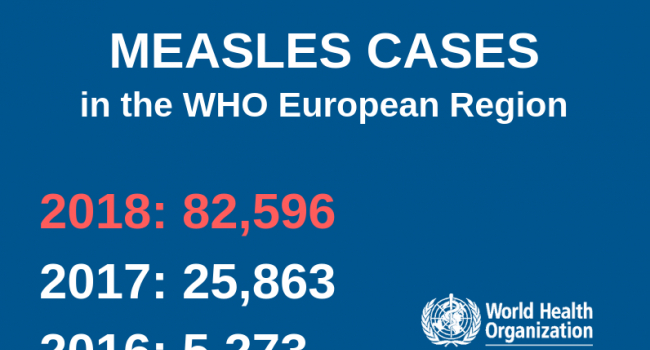- Latest news▼
-
18:00, April 18 Daily Mail: Elderly woman in China gets infected with brain-eating amoeba

-
14:19, April 18 Obesity: exercising before breakfast helps you lose weight faster

-
10:42, April 18 The Conversation: childhood trauma can cause pathological hoarding

-
08:37, April 18 Daily Mail: Satiating food reduces cravings for sweets, nutritionist says

-
18:22, April 17 First Armenian-German Conference entitled “Heart Failure Spring School”

-
08:38, April 17 Why do kids usually recover from COVID-19 more easily than adults?

-
14:37, April 16 Daily Mail: intermittent fasting is not suitable for children and women before their periods

-
16:41, April 15 Cell: in carriers of defective BRCA2 gene, sugar consumption increases cancer risk

-
15:04, April 15 305 cases of measles recorded in Armenia so far in 2024

-
14:38, April 15 Food and Environmental Virology: tea contributes to effective coronavirus control

-
12:41, April 15 Daily Mail: vitamin A, B3 and E supplements can be dangerous

-
10:56, April 15 Diabetes Care: evening physical activity is good for the heart

-
08:27, April 15 Women are more susceptible to blood loss and death during bypass surgery than men, researchers say

-
18:42, April 13 WHO: Nigeria pioneers revolutionary meningitis vaccine

-
16:43, April 13 One-third of women experience menstruation-related migraines, most often during premenopause - study

All materials
WHO: Measles in Europe: record number of both sick and immunized

More children in the WHO European Region are being vaccinated against measles than ever before; but progress has been uneven between and within countries, leaving increasing clusters of susceptible individuals unprotected, and resulting in a record number of people affected by the virus in 2018. In light of measles data for the year 2018 released today, WHO urges European countries to target their interventions to those places and groups where immunization gaps persist.
Measles killed 72 children and adults in the European Region in 2018. According to monthly country reports for January to December 2018 (received as of 01 February 2019), 82 596 people in 47 of 53 countries contracted measles. In countries reporting hospitalization data, nearly 2/3 (61%) of measles cases were hospitalized. The total number of people infected with the virus in 2018 was the highest this decade: 3 times the total reported in 2017 and 15 times the record low number of people affected in 2016.
The surge in measles cases in 2018 followed a year in which the European Region achieved its highest ever estimated coverage for the second dose of measles vaccination (90% in 2017). More children in the Region received the full two-dose series on time, according to their countries’ immunization schedules, in 2017 than in any year since WHO started collecting data on the second dose in 2000. Coverage with the first dose of the vaccine also increased slightly to 95%, the highest level since 2013. However, progress in the Region, based on achievements at the national level, can mask gaps at subnational levels, which are often not recognized until outbreaks occur.
“The picture for 2018 makes it clear that the current pace of progress in raising immunization rates will be insufficient to stop measles circulation. While data indicate exceptionally high immunization coverage at regional level, they also reflect a record number affected and killed by the disease. This means that gaps at local level still offer an open door to the virus,” says Dr Zsuzsanna Jakab. “We cannot achieve healthier populations globally, as promised in WHO’s vision for the coming five years, if we do not work locally. We must do more and do it better to protect each and every person from diseases that can be easily avoided.”
Source: euro.who.int
Follow NEWS.am Medicine on Facebook and Twitter
- Video
- Event calendar
- Archive
- Most read
month
week
day
- Pediatrics: Hypoglossal nerve stimulation implant helps with sleep apnea 1361
- Health minister: Simulation educational center will be created, assisted reproductive technology capacity will increase in Armenia 1317
- WHO: Nigeria pioneers revolutionary meningitis vaccine 1169
- One-third of women experience menstruation-related migraines, most often during premenopause - study 1136
- Women are more susceptible to blood loss and death during bypass surgery than men, researchers say 943
- Food and Environmental Virology: tea contributes to effective coronavirus control 921
- Daily Mail: vitamin A, B3 and E supplements can be dangerous 920
- Cell: in carriers of defective BRCA2 gene, sugar consumption increases cancer risk 893
- 305 cases of measles recorded in Armenia so far in 2024 885
- Diabetes Care: evening physical activity is good for the heart 874
- Daily Mail: intermittent fasting is not suitable for children and women before their periods 699
- First Armenian-German Conference entitled “Heart Failure Spring School” 492
- Why do kids usually recover from COVID-19 more easily than adults? 361
- Obesity: exercising before breakfast helps you lose weight faster 345
- The Conversation: childhood trauma can cause pathological hoarding 339
- Find us on Facebook
- Poll





